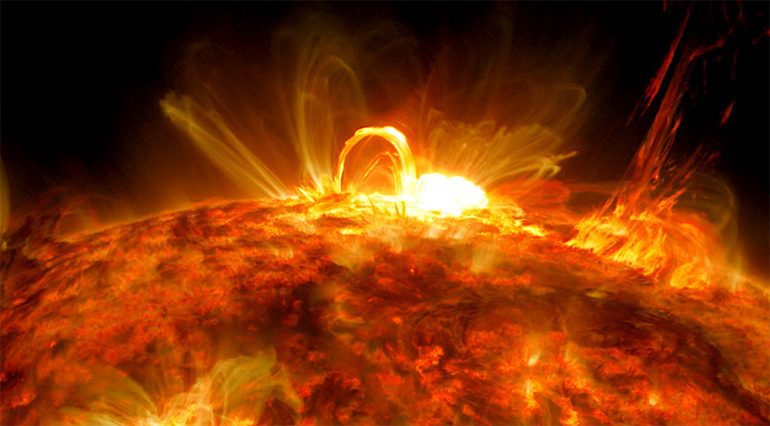Surprisingly different: Our Sun has more oxygen, silicon and neon than thought—the proportion of all the heavier elements is 26 percent higher than current models, astronomers have found. Not only does this shed new light on the composition and structure of our star, the new values also illustrate a contradiction between spectral data and helioseismological measurements that has puzzled decades.
To find out what elements are in a star like our Sun, astronomers use spectral analysis: The dark lines in the rainbow of the light spectrum describe where atoms absorb parts of the radiation and what they are. In 1920, astrophysicists also found that the strength of these spectral lines also allowed conclusions to be drawn about the temperature at their source. Since then, the solar spectrum has formed an important basis for models of the structure and evolution of the Sun and other stars.

puzzling discrepancy
This was even more shocking when astronomers realized a few years ago that these data and models were not consistent with the results. helioseismology fit. With this relatively new measurement method, researchers use the subtle oscillations of the Sun and its surface to draw conclusions about processes and structure. However, helioseismological observations deviate from traditional models based on spectral data in several important points.
One of the discrepancies is that the Sun’s crust must have been much larger than the model predicted in size by convection currents. The speed of the sound waves in the lower part of the convection zone, the total amount of helium and the release of solar neutrinos also show obvious discrepancies with the spectral model. For years, astronomers have confused and debated this fundamental anomaly, known as the “solar abundance crisis”.
How can this contradiction between the two fundamental and established methods of solar research be explained? Some researchers put forward exotic hypotheses that our star swallowed metal-poor gas in its early days, or that dark matter is hidden in the Sun’s interior.
New assessment of solar spectrum
However, astronomers led by Ekaterina Mag from the Max Planck Institute for Astronomy in Heidelberg have chosen a different approach. So far, models based on spectral data have mostly assumed a local thermal equilibrium (LTE) in the interior of the Sun. Thereafter, the energy in each region of the stellar atmosphere reaches an equilibrium that determines the local temperature. However, recent data suggest that this thermal equilibrium is not reached in many stellar atmospheres – so the model has been over-simplified.
So Mag and his team used data from high-resolution solar spectra to more accurately calculate the interaction of radiation and matter in the solar photosphere using so-called non-LTE calculations. From these calculations, they re-determined the relationship between the strength of the spectral lines and the abundance of the element concerned – and thus obtained new data on the chemical composition of the Sun.
Sun is richer in metals than expected
Surprising results: The new results deviate significantly from existing models for several important elements. The Sun apparently contains more oxygen, silicon and neon than previously thought. “The value of oxygen abundance was about 15 percent higher than in previous studies,” reports Mag. Overall, the ratio of elements heavier than helium in the Sun is 26 percent higher than previously thought – so the Sun is richer in the metal than previously assumed.
More importantly, these new values address the “solar abundance crisis”: by inserting spectral element values into models of the Sun’s composition and evolution, the enigmatic discrepancy with helioseismic measurements disappears. “This is the first time that standard solar models based on spectroscopic results can reproduce the internal structure of the Sun, which was determined by helioseismological techniques,” the research team says.
the way to a better solar model
The study thus paves the way for new models of the Sun and stellar structure that are compatible with spectral and helioseismological observations. “The new solar models, based on the new chemical composition values we’ve determined, are more realistic than ever: they result in a model of the Sun that is compatible with all the information we have about the Sun’s composition today. – SOUND Waves, neutrinos, luminosities and solar radii – inside the Sun without using exotic physics,” says MAG’s collaborator Maria Bergman.
Another advantage is that the new model can be better applied to stars other than the Sun. This places future analyzes of stellar chemistry, and therefore the reconstruction of the chemical evolution of our universe, on a more solid foundation than ever before. (Astronomy and Astrophysics, 2022; doi:10.1051/0004-6361/202142971,
Source: Max Planck Institute for Astronomy

Internet fan. Alcohol expert. Beer ninja. Organizer. Certified tv specialist. Explorer. Social media nerd.





